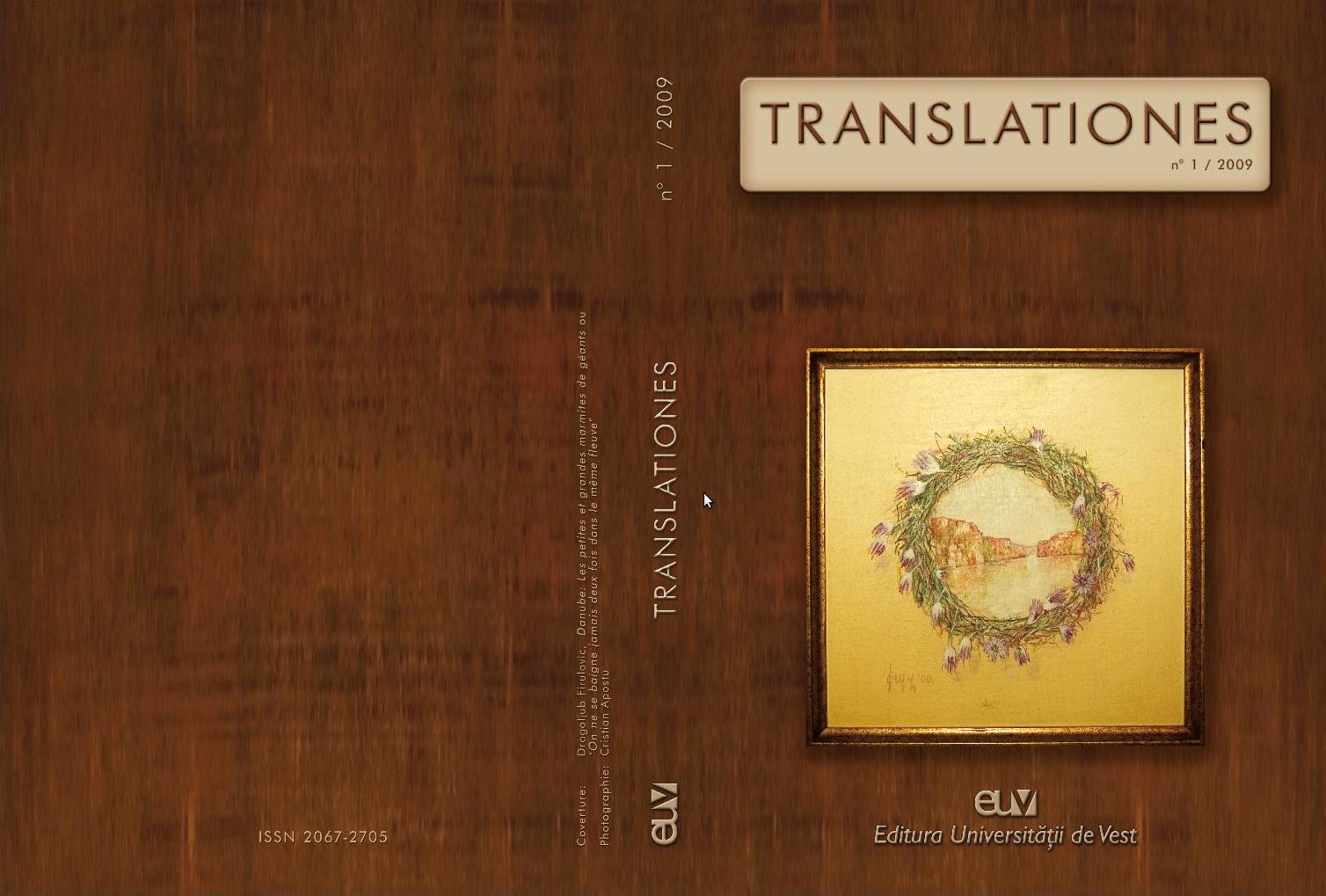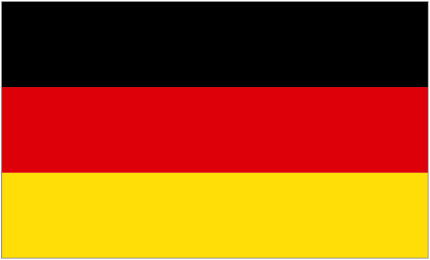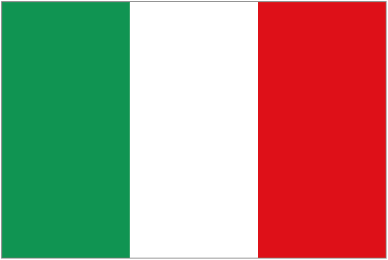
Translationes
Archiv
Translationes : « Übersetzen: Implikation und ästhetische Spiele. Ethos und Ethik, Technik und Praxis des Übersetzens »
N° 2/2010
Editura Eurostampa, Timisoara,
2010, 206 p. ISSN : 2067 – 2705

|
Sumar
Introduction
Jean-René LADMIRAL, Un triangle traductologique
- Theoretischer Teil:
- Antonio BUENO GARCÍA, Ética y estética de la traducción monástica. Los traductores y lingüistas franciscanos españoles del árabe y el hebreo
- René LEMIEUX, Éthique et esthétique de l’Autre en traduction : une réflexion à partir de récentes critiques contre la traductologie d’Antoine Berman
- Praxis und Didaktik des Übersetzens, Übersetzungskritik:
- Freddie PLASSARD, Mineur de fond ou chirurgien esthétique? Traducteur et traduction dans Vengeance du traducteur de Brice Matthieussent
- Carmen-Ecaterina AŞTIRBEI, Pour une poétique du traduire. Techniques de traduction de la métaphore dans le texte en vers
- Iulia NĂNĂU, Tradurre le licenziosità di linguaggio: una questione etica o di pudore?
- Sophie LÉCHAUGUETTE, Traduire pour des collections pratiques
- Soziologie der Übersetzung:
- Despina GROZĂVESCU, Alcuni elementi culturali contestuali nel doppiaggio italiano
- Würdigungen von Übersetzern und Übersetzungstheoretikern
- Dan NEGRESCU, Pius translator et optimus
- Georgiana LUNGU-BADEA, Dichotomies, trichotomies, quadrichotomies dans la théorie traductologique de Jean-René Ladmiral
- Erstmalige Übersetzungen, zweisprachige Texte
- Yves FRONTENAC, Outil à lame experte/ Talismanul
- Corneliu MIRCEA, Facerea. Tratat despre spirit / La Création. Traité de l’Esprit
- Justo BOLEKIA BOLEKA, Llamas de paja / Flăcări de paie
- Rezensionen
- Anda Rădulescu, Bref aperçu des grands courants en traduction : théories européennes et américaines (Ioana Puţan)
- Irena Kristeva, Pour comprendre la traduction (Neli Ileana Eiben)
- Des mots aux actes, Revue SEPTET. « Traduction et philosophie du langage. Hommage à Henri Meschonnic » (Adina Hornoiu)
- Revue internationale d’études en Langues Modernes Appliquées (Alina Bîrdeanu)
- MonTI - Monografías de Traducción e Interpretación (Ilinca Ţăranu) / 165
- Colindancias (Adela Rujan)
- Pârlog, Hortensia and Luminita Frentiu, Loredana Fratila (eds.). Challenges in Translation (Daniel Dejica)
- Interviews
- Qu’est-ce qu’un traductologue? Interview avec Jean-René Ladmiral (G. Lungu-Badea)
Bio-bibliographische Daten
Résumés / Abstracts
- Un triangle traductologique - Jean-René LADMIRAL
-
Résumé: La traductologie, discipline toute jeune, se situe nettement en aval des
grandes sciences humaines et des disciplines traditionnelles. « Science » fondamentalement
interdisciplinaire, elle emprunte à ces disciplines majeures une bonne part de sa
méthodologie et des concepts qu’elle met en œuvre. Au sein de ce concert interdisciplinaire,
une place déterminante revient à l’histoire : à l’histoire de la traduction (ou l'histoire
des traductions) et à l'histoire tout court. Un triangle méthodologique de la recherche
devrait donc intégrer les trois composantes suivantes : a) la théorie traductologique ; b)
les différentes pratiques de la traduction qu'elle prend pour objet et qu'elle elle a
vocation d'éclairer ; c) les pôles du couple théorie / pratique qui seront re-situés dans la
logique de leur histoire respective et commune.
Mots-clés: statut et âges de la traductologie, (triangle) méthodologique, quatrain traductologique, « théorie traductologique », « théorèmes pour la traduction », interdisciplinaire, sourciers vs. ciblistes.
Abstract: The new discipline of translation studies clearly finds itself downstream among humanities and traditional disciplines. Essentially interdisciplinary, this “science” lends those major disciplines a fair amount of its methods and concepts. Within this interdisciplinary concert, history plays a crucial role: history of translation (or history of translations) and history as such. Therefore, a methodological research triangle must integrate the following three components: a) translation studies theory; b) different translation practices that form its object of study and which it is called upon to clarify; c) the poles of the couple theory / practice will be re-situated in the logic of their respective common history.
Keywords: status and stages of translation studies, methodological triangle, translation rectangle, “translation theory”, “translation theorems”, interdisciplinarity, sourciers vs. ciblistes
- Ética y estética de la traducción monástica. Los traductores y lingüistas franciscanos españoles del árabe y el hebreo - Antonio BUENO GARCÍA
-
Résumé: La traducción realizada por monjes, frailes o religiosos tiene unas
características propias y una implicación ética que la distinguen de las demás. Los
franciscanos españoles han jugado desde la Edad Media un papel relevante en el contacto de
lenguas y culturas con otros pueblos y religiones, y en especial con árabes y judíos; pero
el sentido de su actividad lingüística y traductora se ha visto influido por los tiempos y
las circunstancias.
Mots-clés: Franciscano – traducción monacal – traductor monacal – ética – estética - fidelidad -literalidad - lealtad –fiabilidad- transparencia – moral – pacto - Regla – Orden
Abstract: Translations done by monks, brothers, or other religious orders have particular characteristics and ethical implications that distinguish them among other kinds of translations. During the Middle Ages, Spanish Franciscans played an important role in the contact of languages and cultures with other people, such as Arabs and Jews, but the course of their linguistic and translation activity was influenced by the times and circumstances.
Keywords: Franciscan, monastic translation, monastic translator, ethics, esthetics, fidelity, literalness, loyalty, reliability, transparency, moral, pact, Rule, Order
- Éthique et esthétique de l’Autre en traduction : une réflexion à partir de récentes critiques contre la traductologie d’Antoine Berman - René LEMIEUX
-
Résumé: À partir d’un débat commencé par Charles Le Blanc dans son livre Le Complexe
d’Hermès contre les théories traductologiques, l’auteur passe en revue trois types de
critique – la portée théorique de la traductologie, la figure de l’Autre et le rôle de la
Bildung – pour à chaque fois revenir aux textes d’Antoine Berman et répondre aux critiques
de Le Blanc. Se dévoile alors dans cette polémique un travail de l’esprit proche de celui à
l’œuvre chez les romantiques allemands et une invitation à continuer la réflexion au-delà du
débat sur la traduction pour la porter sur « ce qui fait société ».
Mots-clés: Traduction – philosophie ; éthique – traduction ; esthétique – traduction ; Berman, Antoine ; romantisme – Allemagne
Abstract: From a debate started by Charles Le Blanc in his book Le Complexe d’Hermès against translation study theories, the author reviews three kinds of criticism – the theoretical scope of translation studies, the figure of the Other, and the role of Bildung – each time returning to the texts written by Antoine Berman in response to Le Blanc’s criticism. It is then unveiled that in this polemic one can find a work close in spirit to that of German Romantics and an invitation to continue reflection beyond the strict debate on translation to bring it to “what society is made of”.
Keywords: Translation – philosophy ; Ethics – translation ; Aesthetics – translation ; Berman, Antoine ; Romanticism – Germany
- Mineur de fond ou chirurgien esthétique? Traducteur et traduction dans. Vengeance du traducteur de Brice Matthieussent - Freddie PLASSARD
-
Résumé: Dans ce roman, Brice Matthieussent aborde la question de la relation entre
auteur et traducteur sous la forme d’une prise de pouvoir du second sur le premier par note
du traducteur interposée. Au terme d’une littérale mise à mort de l’auteur, non plus
seulement symbolique mais physique, c’est aussi une esthétique de la traduction qui se
dessine, tour à tour appropriation, digestion, déménagement et transgression, esthétique
qu’il serait toutefois abusif de porter au compte de l’auteur du roman, lui-même traducteur
renommé.
Mots-clés: relation auteur-traducteur, mort de l’auteur, note du traducteur, appropriation, transgression
Abstract: In the novel Vengeance du traducteur, Brice Matthieussent focuses on the translator-author relationship and tackles the question from the point of view of the translator’s note. The author is eventually murdered by the translator out of revenge, not only in symbolical terms but also in literal terms. A given aesthetics of translation is thereby conveyed, going through stages of appropriation, digestion, transportation and transgression of text and translation rules, which nonetheless does not necessarily reflect the author’s genuine stand, a famous translator himself.
Keywords: Translator-author relationship, author’s death, translator’s note, appropriation, transgression
- Pour une poétique du traduire. Techniques de traduction de la métaphore dans le texte en vers - Carmen-Ecaterina AŞTIRBEI
-
Résumé: La traduction de la poésie a suscité des débats parce que le traducteur est
vu comme re-créateur du texte, comme poète en abyme. La poésie est difficile à traduire à
cause de sa concision et de sa dynamique intertextuelle. La démarche traductologique suppose
une perspective comparative et une analyse des particularités du texte. En tant que procédés
de traduction, on identifie la duplication, qui est la reproduction rigoureuse et fidèle
dans la langue cible, la transposition, la création d’un effet comparable à celui original
et l’analyse dialogique. La poétique du traduire sera adaptée aux particularités de chaque
poème.
Mots-clés: traduction, poésie, duplication, transposition, analyse dialogique
Abstract: The translation of poetry has caused many debates because the translator is seen as a re-creator of the text and his work becomes « poetry en abyme ». Poetry is difficult to translate because of its conciseness and intertextual dynamics. The translator’s work supposes a comparative perspective and an analysis of the text’s peculiarities. Among the translation methods employed, one can identify duplication, i.e., strict and faithful reproduction in the target language, transposition, the creation of an effect similar to the original one, and dialogic analysis. The poetics of translation will be adapted to the features of each poem.
Keywords: translation, poetry, duplication, transposition, dialogic analysis
- Tradurre le licenziosità di linguaggio: una questione etica o di pudore? - Iulia NĂNĂU
-
Résumé: Cet ouvrage veut attirer l’attention sur un fait assez commun concernant la
traduction des œuvres de la littérature italienne contemporaine, en roumain, celui de
censurer les termes licencieux et le langage grossier. Des termes comme l’éthique de la
lecture, l’éthique de la traduction ou pudeur sont mis en discussion dans la tentative de
donner une réponse à la question posée par la légitimité de la censure dans un sens de la
pudeur, compris dans ce cas-ci différemment par le traducteur que par l’auteur ou le public.
En faisant appel aux techniques d’analyse textuelle, on essayera de démontrer que la non
traduction littérale des termes licencieux est inadéquate.
Mots-clés: éthique de la lecture, éthique de la traduction, pudeur, registres de langue, langage obscène
Abstract: The purpose of this article is to draw attention to the fact that when it comes to the translation of contemporary Italian fiction into Romanian, obscene and indecent language is being censored. Terms like ethics of reading, ethics of translation or decency will be discussed in order to find an answer to the question posed by the legitimacy of censorship in the name of decency, differently understood, in this particular case, by the translator and the author or the readers. The inadequacy of not translating obscene language will be demonstrated using textual analysis techniques.
Keywords: ethics of reading, ethics of translation, decency, linguistic register, obscene language
- Traduire pour des collections pratiques - Sophie LÉCHAUGUETTE
-
Résumé: Cet article analyse la traduction de textes pragmatiques dans le contexte de
l’édition pour répondre aux questions d’étudiants désorientés par cet aspect du métier et
jeter quelques lumières sur une pratique méconnue. Devenus simple matière première
perfectible, ces textes se caractérisent par leur inscription dans une maquette qui va
influer sur le travail de traduction d’un ensemble de pavés de textes hiérarchisés. L’examen
du statut de leur auteur amène à réévaluer la notion de fidélité. Quelques conseils,
invitant à dépasser les clivages traditionnels hérités de la traduction littéraire pour
aborder la « traduction pragmatique » viennent clore la discussion.
Mots-clés: Traduction, maquette, typographie, texte éclaté, intertextualité interne, construction du sens, normes culturelles, réécriture, iconographie, sémiotique, pragmatique.
Abstract: This article analyses the translation of pragmatic texts within the publishing industry. It hopes to shed light on an overlooked area of translation that students find disorientating. In this context, the text becomes perfectible raw material. It is further defined by its inscription within a layout which disrupts its linearity; both facts are going to influence the phrasing of the translation. Their author’s status is discussed because it leads to a reassessment of the notion of fidelity. This article ends with advice for inexperienced translators and with an invitation to go beyond the traditional dualities inherited from literary translation to grasp pragmatic translation.
Keywords: Translation, layout, typography, fragmented text, internal intertextuality, construction of meaning, cultural norms, rewriting, iconography, semiotics, pragmatics.
- Alcuni elementi culturali contestuali nel doppiaggio italiano - Despina GROZĂVESCU
-
Riassunto: Il presente lavoro si propone di mettere in luce alcuni aspetti della
traduzione audiovisiva, soffermandosi in particolare sulle specificità culturali. Le
procedure di traduzione del testo filmico più note sono il doppiaggio e la sottotitolazione
e nel presentare alcune caratteristiche di ciascuna, concentreremo l’attenzione sulla prima.
È noto il fatto che, tranne alcuni casi isolati, i film stranieri vengono doppiati in
italiano. Essi sono cioè presentati con dialoghi in italiano opportunamente tradotti e
adattati da quelli della versione originale. Quindi, il termine « traduzione » non si
riferisce solo a testi letterari, bensì a tutti i tipi di testo, anche alla sceneggiatura
filmica. Ci proponiamo a mettere in risalto l’importanza e la complessità del doppiaggio e
di mostrare le peculiarità culturali dell’italiano doppiato, attraverso la presentazione di
dati che evidenzieranno i tratti specifici e le regolarità che caratterizzano gli
adattamenti italiani.
Parole chiave: traduzione audiovisiva, doppiaggio, adattamento, strategie traduttive, elementi culturali.
Abstract: Our paper is considering some aspects of audiovisual translation, with a certain emphasis on cultural characteristics. The most common means used for text translation are dubbing (post-synchronisation) and subtitling, and the focus of this research lies on the former. It is well-known that foreign films are dubbed in Italian and dialogues in Italian are translated and adapted differently by comparison with the original version. Film translation is a phenomenon made of two different parts: translation and cinema. Actually, it applies its mains techniques for transposing the linguistic unit of a film from the source language to the target one. Therefore, the word “translation” takes into account literary texts but also all kinds of texts (including scripts). We propose to underline the importance and the complexity of dubbing and to consider the particularity of dubbed Italian, with the bias of specific characteristics of Italian adaptations.
Keywords: audiovisual translation, dubbing, adaptation, translation strategies, cultural transfer.
- Pius translator et optimus - Dan NEGRESCU
-
Résumé: Nous proposons de montrer dans cet article quelle est la direction empruntée
par les traducteurs chrétiens au cours des premiers siècles de christianisme. Parallèlement,
nous esquissons leur manière de répondre aux exigences de la traduction, aux attentes des
mécènes, et de concilier l’esthétique et l’éthique de la traduction.
Mots-clés: moralité et objectivité du traducteur, la traduction à l’aube du christianisme
Abstract: In this article, we aim at showing the direction taken by Christian translators during the first centuries of Christianity. In parallel, we sketch the manner in which they answered the demands of translation and the expectations of patrons as well as their reconciling of the aesthetics and the ethics of translation.
Keywords: morality and objectivity of the translator; translation at the dawn of Christianity
- Dichotomies, trichotomies, quadrichotomies dans la théorie traductologique de Jean-René Ladmiral - Georgiana LUNGU-BADEA
-
Résumé: Dans cet article nous présentons les lignes directrices de la théorie
traductologique ladmiralienne : les « théorèmes pour la traduction », la dichotomie
sourciers ciblistes, le triangle méthodologique et le quatrain traductologique. Ce sont des
repères essentiels qui ont marqué la recherche en traductologie internationale.
Mots-clés: traductologie, théorèmes, sourciers-ciblistes, théorie traductologique
Abstract: In this article, we present the guiding lines of Ladmiral’s translation theory: « theorems for translation », dichotomy sourciers - ciblistes, source - target, the methodological triangle and the translation theory rectangle. These are the essential landmarks of international translation theory research.
Keywords: translation studies, theorems, source - target, translation theory.





